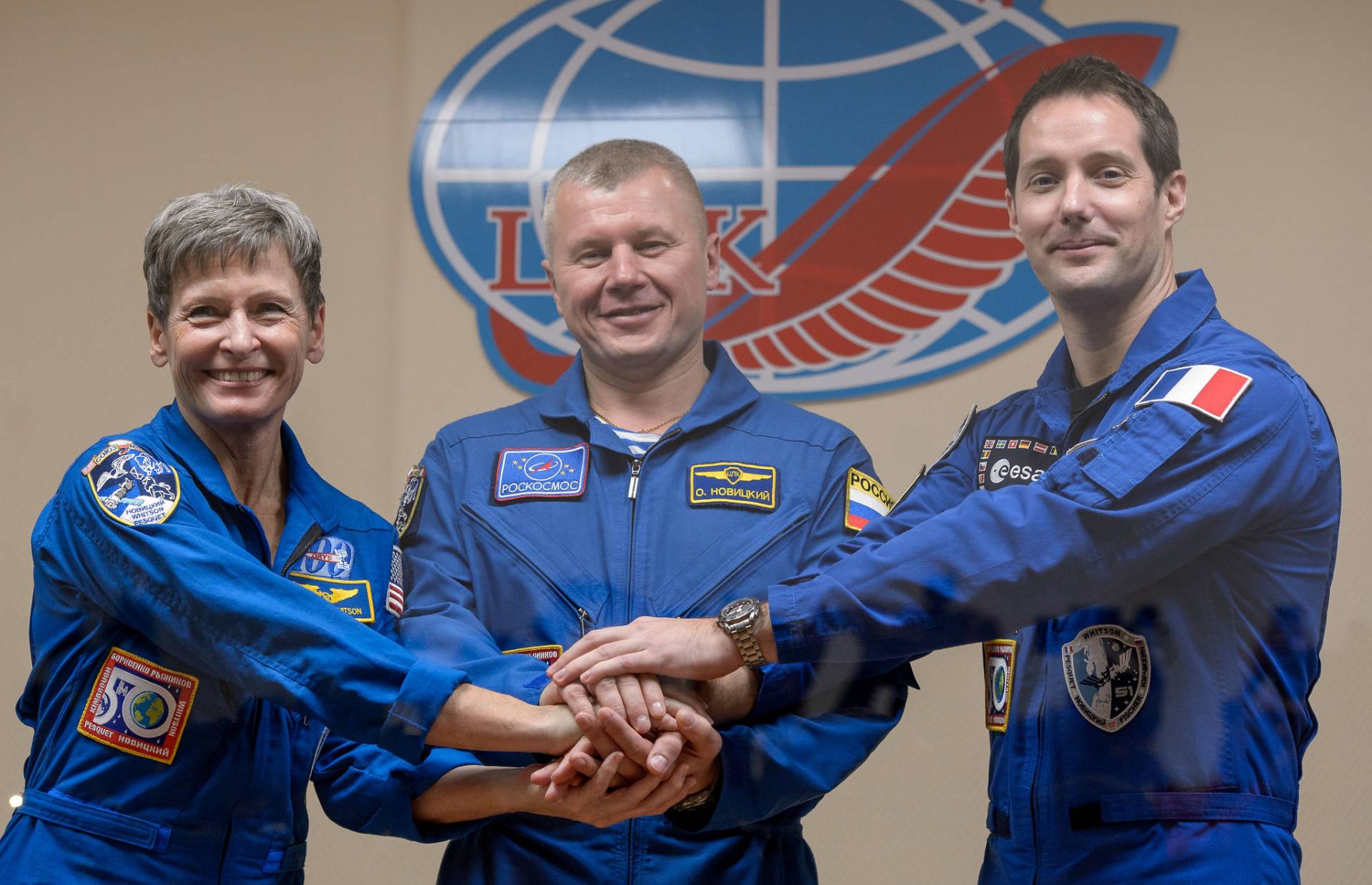Russia’s Soyuz MS-03 spacecraft docked on the International Space Station to add three more crew members to the habitat located 260 miles up in space. Thomas Pesquet from France, Oleg Novitskiy from Russia, and Peggy Whitson from the U.S., launched from the Baikonur Cosmodrome in Kazakhstan last Thursday, making their arrival at the ISS at 21:58 GMT on Saturday.
Pesquet is the first French-born astronaut sent to the International Space Station since 2008, while Novitskiy is a Roscosmos veteran, making his second arrival at the ISS. Whitson, on the other hand, is a biochemistry expert, expected to surpass the record of most days stationed in space by an American astronaut, as the record stands at 534 days. In 2007, Whitson was the first woman to be appointed the commander of the International Space Station.

Nations meet at Earth’s low-orbit
The three new crew members are joining the Expedition 50 crew, comprised of Roscosmos’ Sergey Ryzhikov and Andrei Borisenko, commanded by NASA’s Shane Kimbrough. The whole crew of six will be conducting a plethora of experiments in the fields of biology, physics, and biotechnology. One of the research objectives is to review how lighting affects the health of space station crew members and how microgravity acts upon the regeneration of tissue and plant growth. In March, two more crewmembers are expected to reach the ISS.
On their stay, the crew will receive three deliveries of supplies, including batteries for the space station, fuel, food, and scientific material. Pesquet, Novitskiy, and Whitson are expected to perform their descent back to Earth on May 15.
Currently, the only way to reach the ISS is through Russian Soyuz capsules, seeing that the United States stopped funding these sorts of programs to allow private industries such as SpaceX and Boeing to develop travel alternatives that can be more cost-efficient.
It costs about $71 million to send a single crewmember to the ISS aboard a Soyuz capsule. The capsule capable of returning to Earth, always landing in a remote area of Kazakhstan after a 3.5-hour trip. The Soyuz modules were designed in the 1960s and remain as the most frequently used and most reliable space launch vehicle to date.
Only two Soyuz missions have resulted in accidents, totaling four crew members. It consists of an orbital module, where the crew is accommodated during space travel, a reentry module that becomes detached from the rest and descends onto Earth, and a service module containing navigation elements and the spacecraft’s engines.
When the three astronauts complete their stay above the ISS, they will have to return aboard the same Soyuz MS-03 capsule that they arrived on.
As it descends, the capsule is slowed by the atmosphere and then by its braking parachute. A second parachute is deployed, preparing the module for landing, and just one meter above the ground, the capsule activates its fueled braking engines located beneath the heat shield, allowing for a soft landing.
Soyuz capsules are far from reusable, which is yet another incentive for developing sustainable space travel to reduce costs and increase the frequency of launches.
Source: Space
